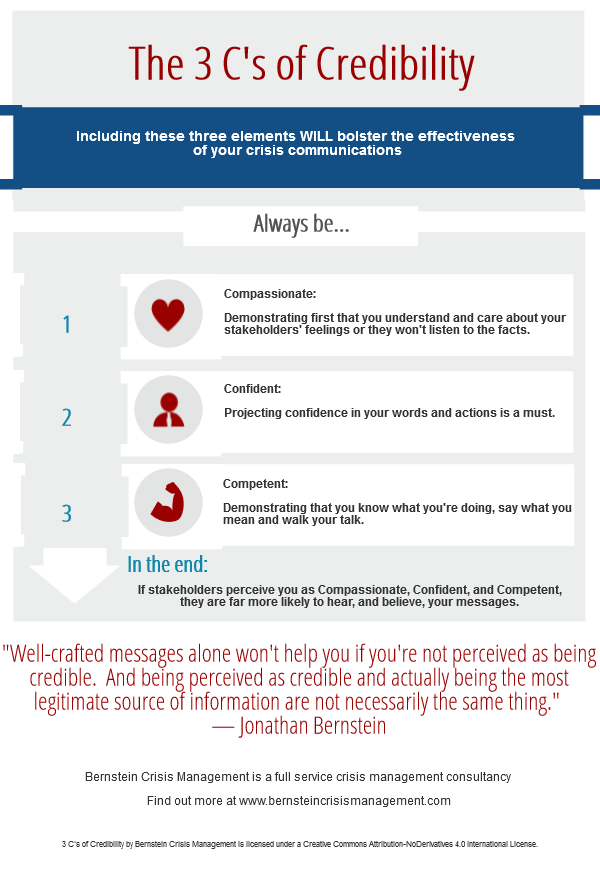[Editor’s note: This post features a guest contribution from freelance writer Beth Kotz. A big thank you to Beth, and if anyone else out there has a post they think may be a fit for our blog please get in touch at erik@bernsteincrisismanagement.com!]
Small businesses don’t have time for setbacks. The best way to protect your company, and your employees, is to consider the possibility of an emergency and develop an action plan that will ensure everyone knows what to do if disaster strikes.
Because September is National Preparedness Month, it’s the perfect time to #PlanAhead and put a disaster plan into practice. The advice here will help your business prepare in advance of a crisis, mitigate certain risks, and shorten the length of time it takes to get back on track.
#1 – Assess the Situation
90% of Americans say being ready for an emergency is important but they don’t know where to start. First think, what types of emergencies is your business most likely to face? Certain threats are universal, but depending on your operation’s size and scope, what you sell or do, and with whom you conduct business, the risk of certain crises will vary. Conduct a vulnerability analysis to determine your business’s key threats, both internal and external. Don’t forget to consider your location – the physical site of your business greatly impacts the likelihood of certain risks and should be carefully considered in your preparedness response.
#2 – Planning Makes Perfect
This includes, first and foremost, an evacuation plan. Make sure all your employees are able to quickly leave the premises, and are trained in what to do to keep themselves safe. Provide an emergency-supplies kit with candles, batteries, matches, flashlights, and first aid supplies.
If planning a complete crisis response for your company sounds overwhelming, remember you don’t have to do this on your own. In fact, you shouldn’t – assemble a company team to put together a step-by-step process of how to react to an emergency, including who will specifically be responsible for different actions. Write down these details, in addition to information for key business contacts and any digital login information that will be critical to the recovery process. Putting this down in writing will allow you to formulate a budget and determine how much it will cost to recover data, repair an online server, and even run your company from another location. Would you be ready to work remotely if need be?
If a natural, or man-made, emergency were to occur, you’ll also need the right insurance. Place a call to your insurance representative and make sure you have the protection you need.
While bringing in a professional with the right certifications might be the superior option, rarely is this in the budget of an SMB. The best way to prepare for the event of a disaster is to maximize the resources available to you on the DHS/FEMA or Ready.gov website to get started right away. The CDC also offers a bevy of information for businesses in need of guidance for disaster planning.
The DHS website recommends the following preparedness basics:
- Write a preparedness plan addressing:
- Resource management
- Emergency response
- Crisis communications
- Business continuity
- Information technology
- Employee assistance
- Incident management
- Training
- Testing and Exercises
- Test and evaluate your plan
- Define different types of exercises
- Learn how to conduct exercises
- Use exercise results to evaluate the effectiveness of the plan
- Program Improvement
- Identify when the preparedness program needs to be reviewed
- Discover methods to evaluate the preparedness program
- Utilize the review to make necessary changes and plan improvements
Once you’ve got a plan in place, you may be tempted to let it lie. That’s a mistake – once or twice each year, evaluate your preparedness plan and review procedures with your employees. Only communicative, flexible planning can mitigate the possibility of long-term damage.
#3 – Minimize Risk Factors
Of course you can’t predict the weather, and you can’t control the actions of others. But you can take proactive steps to minimize certain risks to your business before Mother Nature strikes or before a catastrophic break-in occurs.
Crimes against small businesses can be very costly, if the site of your company is in a high-crime area, you’ll come out ahead using security measures to prevent potential damages to your property or worse – harm to your employees. Basic precautions, like dead bolt locks and steel security doors, can lessen the likelihood of a break in, as well as timed or motion-triggered lights which give the impression of occupancy at all hours. Also consider installing security alarms and security cameras (which you can monitor remotely from a smartphone) at points of building access. Any steps you take to minimize crime and theft – both from outsiders and your own employees – offer a smart return on your investment.
Along with the physical security of your building, you also have to think about how to keep your digital operations running smoothly in the face of intensifying cyber threats. Store computer data using professional cloud-based software and, if the budget allows, an IT security company. Routinely check for updates and threats to your technology. Hackers look for easy access, and small businesses are a regular target of cyberattacks.
#4 – Restore, Recover, Rebuild
Knowing how you and your employees will handle a disaster is important, but it’s also critical to understand the impact that certain crises would have on your business, your employees, and your cash flow. This is called continuity of operations planning, and it’s a key component of both disaster and recovery preparedness. Start by conducting a business impact analysis, which shows how your business would be affected by a potential disaster, and then work closely with HR to discuss how to most effectively assist any members of your team who are experiencing post-emergency trauma. Following the event of a crisis, everyone must come together to get the company back on its feet.
Disasters happen. Nearly half of all small businesses never recover following a crisis, but you don’t have to be one of them. Even after creating an emergency plan, it’s wise to continue to stay informed of what you can do in the event of disasters large and small. The testimonials of individuals who have been through crises like Hurricane Sandy or 9/11 can provide some practical insights, and encourage you to continue to improve your plan. Face the future with confidence and start prepping your business today!
Beth Kotz is a freelance writer and contributor for numerous home, technology, and personal finance blogs. She graduated with BA in Communications and Media from DePaul University in Chicago, IL, where she continues to live and work.















